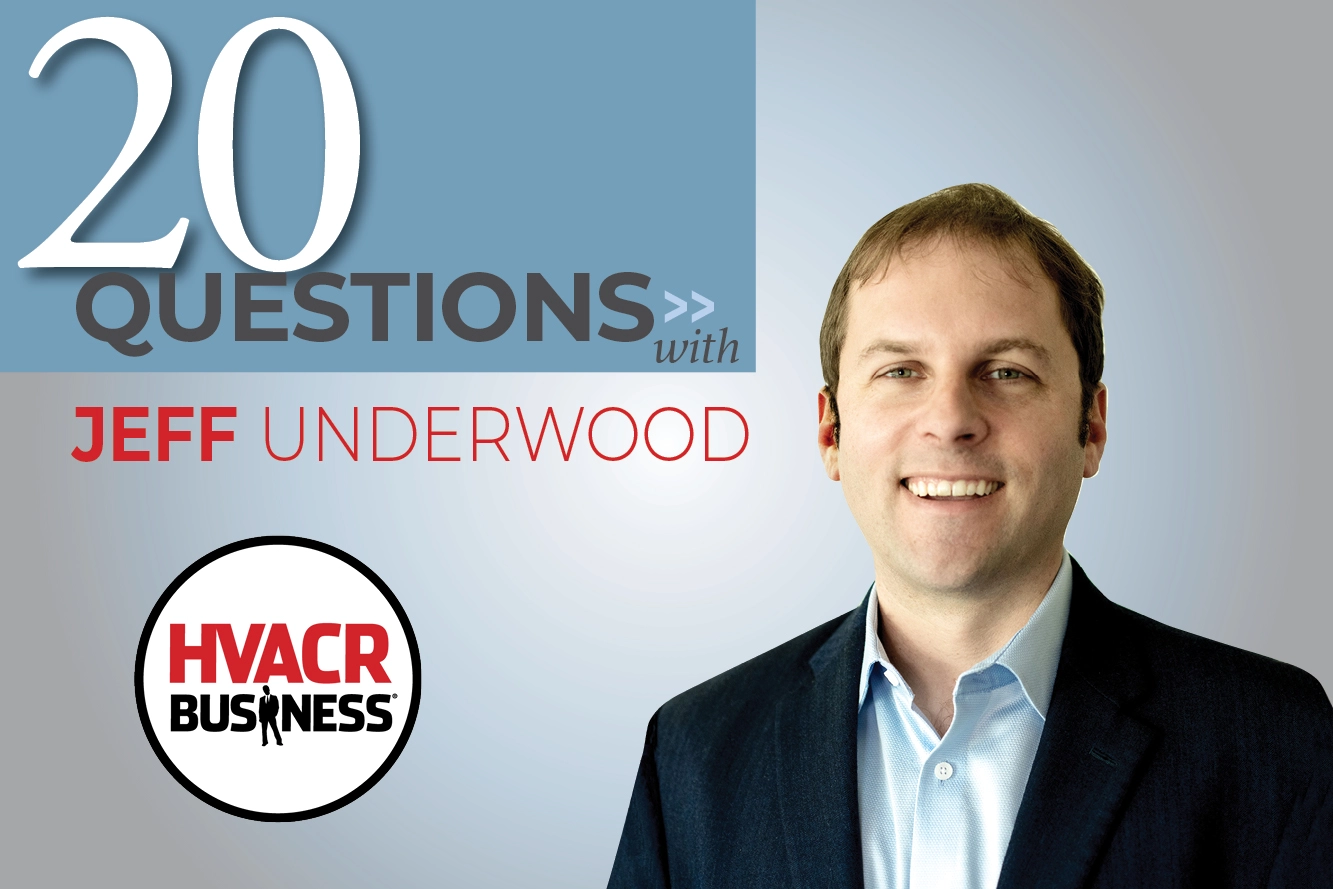We sat down with Corey Hickmann, owner of Comfort Matters Heating and Cooling in Maple Grove, Minn. Hickmann, who is a 2020 Tops in Trucks Fleet Design Contest winner, discussed learning a trade, the effects of the coronavirus pandemic on business and the importance of industry support.
1. How did you start in this industry?
Through high school, I didn’t have a plan of what I was going to do, and didn’t really like school at that age. My brother went to school for HVACR and ended up working for a wholesale supplier. I decided to move across Wisconsin and went to school for HVACR too, and I enjoyed it. It’s amazing how much better I did in school on something I cared about.
2. What did you do after school?
I did some intern work at Trane Engineering in La Crosse, Wisc. In the R&D lab, where I learned that manufacturer work wasn’t for me. I liked the technical aspect of it, but it just wasn’t the direction I wanted.
3. Where did you go from there?
My roommate also worked for a wholesale supplier, the Train Distributor where my brother worked, so I went there. I spent the next 12 years at that distributor and I ended up moving up to Minneapolis during that time.
4. Did you like working in distribution?
Yes. I spent that time training as a territory manager, and learned a lot about the industry and saw a lot of opportunity in the retrofit/replacement side.
5. Then you started Comfort Matters?
Yes, in 2005 I left my job there, built a house, had a child and started my business. All in just a couple of months. It was a little bit of a plan and not a plan.
6. What was it like in the beginning?
It was just myself, so I did everything. I tried to follow the book, wrote a business plan, had some idea and some goals. I did it all from sell it, install it, fix it, service it, and probably hired our first guy about two years in. In the beginning, I’d use anyone I could to help on installs. Anyone I could find if it was short notice or short term.
7. When did you start to grow?
Within two years, we hired our first full-time individual. We installed together, and then eventually he was able to start doing service. And then I think we hired someone in the office to help on the office side.
8. How big are you now?
We have 27 people and grew nicely through the years. I always had growth, anywhere from 15 to 45 percent each year. Building to the first million dollars in revenue was one of the toughest periods … I felt the profit was the lowest and the workload was some of the highest. That was one of the hardest marks to hit.
9. What helped you get there?
That was right around the area when I joined Service Nation Alliance, actually. That allowed me to partner up with some good people with amazing minds who have just done it. Being able to congregate and associate with the best of the best and people who have done it … that was just a game changer.
10. Do you still go out in the field?
No, I’m pretty much corralled to the office most of the time. I’ll still go out and I’ll sell some of the larger and commercial jobs. Or, if they get a weird application type of thing. Actually, I think I have to go on a call tonight because I sold this lady a furnace and air conditioner about 14 years ago and she insists that I come out there.
11. How did you make the leap?
I got rid of my service truck. Probably about eight years ago, I just pulled my truck in the shop and told all the guys, “Okay, take all my parts out of the truck.” I figured if I don’t have parts in the truck, it restricted me. Because what always has happened was, someone would take a call in the office and I’d end up running out on a call. Now, I’m like, “Well, I don’t have any parts, so now we’re going to have to find another way to do this.”
12. What’s your business mix?
Right now, it’s right around 90 percent residential, 10 percent commercial. Maybe 85/15, but by far, the majority is residential maintenance, demand service and replacement.
13. What’s your management style?
I should be more flexible, because I’m sometimes a little brash. I’ve learned to really hold back on a ton of stuff. It’s pretty amazing what toleration can get you. I don’t take things personal, so I can have a hard conversation with someone and we’re done after that conversation. That’s it. We’re good. We’re done. We’re friends again. Everything’s clean. I don’t look to hold onto things like that. Trying to create my leadership skills has been hard, but I’m focused on that process and want to continue to get better.
14. What impact has the pandemic had?
It’s been interesting. When this started in the middle of March, we were literally making an agreement with a new marketing company to make a large marketing push. It was hundreds of thousands of dollars into a plan. At first, I thought, “Whoa, pump the brakes. What do we do? Do I follow through with this?”
15. Did you follow through?
I’ve been told over and over again, anytime you go into a slowdown, recessions and things like that, don’t stop marketing. Matt Michel is somebody who has preached that into me for so many years. So, I said, “That’s it. We’re going to stick to our guns. We’re following suit.” We did it, we released on the plan. We’re still running, continuing on plan right now.
16. What kind of precautions are you taking?
At the beginning, you couldn’t get sanitizer … you couldn’t get anything. We’re buying everything we could. Luckily, we found a local distillery that was not able to brew anymore and they started making sanitizer, so that helped carry us along. We just go through cleaning process after each call … our devices, our phones, our steering wheels, the vehicle and tools. Also, masks are customer-by-customer case. If the customer wants the technician to wear a mask, then we’ll definitely do that. Around the office, we’ve got a daily cleaning ritual goes through a couple times a day.
17. When did you know you had a winning truck design?
I showed it to my daughter, who was probably about 14 then. I said, “Ella, what you think of this?” She looks at it, and goes, “Oh, it’s like an emoji! It makes me smile.” For me, that was it. Done. That’s what I want.
18. Where did the color scheme come from?
The first truck I had when I started the company came from auction, and it was yellow. The colors on our trucks now keep things new, which help us stand out from the competition, but its still recognizable with the yellow.
19. How has this new design paid off?
Without a doubt. Overall image is a really big differentiator between a solid performing HVACR company and one that’s not. I work with a lot of different heating companies, and I see the companies that have created a brand, and then the ones that haven’t. And the ones that have the brand are generally the ones that have the stability.
20. Has marketing helped with recruitment?
Recruitment’s always a difficult thing. Everyone struggles in the industry, and we will for a long time. In general, most technicians are good people who don’t like to move around. By getting our image out there in front of lots of other technicians and things, it’s made a huge difference with people being attracted to us, without a doubt.






